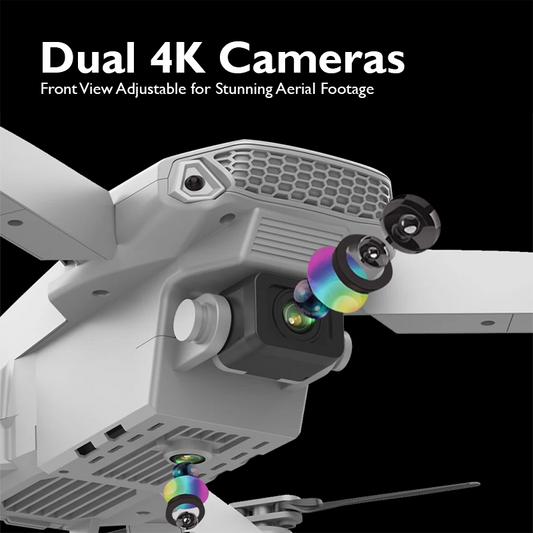Drone Photography in Astronomy: Exploring the Cosmos

In the realm of astronomy, the quest to explore the cosmos has reached new heights—literally. Thanks to the convergence of two groundbreaking technologies, drone technology and photography, enthusiasts and professionals alike can now embark on a celestial journey like never before. In this article, we delve into the fascinating world of drone photography in astronomy, uncovering how these unmanned aerial vehicles (UAVs) are transforming the way we observe and document the cosmos.
The Rise of Drone Technology in Astronomy

As technology continues to advance, so does our ability to explore the universe. Drone technology, initially developed for military and commercial applications, has found its way into the hands of astronomers and astrophotographers. These versatile UAVs offer a unique perspective, allowing enthusiasts to capture breathtaking views of the cosmos from vantage points that were once out of reach.
One of the primary advantages of using drones in astronomy is their mobility. Drones can easily traverse difficult terrain, reach elevated locations, and even hover in the air for extended periods. This unprecedented mobility enables astronomers to access areas that were previously inaccessible, opening up new possibilities for observing celestial phenomena.
How Drone Photography Enhances Astronomical Observations

Drones equipped with high-resolution cameras have become valuable tools for astronomers seeking to document and study the cosmos. Here's how drone photography enhances astronomical observations:
1.Aerial Surveys of Dark Sky Sites:

Drones equipped with low-light cameras are employed to survey potential dark sky sites—areas with minimal light pollution. Identifying and mapping these locations is crucial for astronomers who require clear, unobstructed views of the night sky. Drone surveys contribute to the conservation of dark sky areas and aid astronomers in planning their observations.
2.Access to Remote Locations:
Traditional observatories are often situated in remote, difficult-to-reach locations to minimise light pollution. Drones provide astronomers with the ability to explore and set up temporary observation stations in these remote areas. This not only expands the range of observable celestial objects but also allows for a more immersive and undisturbed stargazing experience.
3.Real-time Monitoring of Celestial Events:
Drones equipped with advanced imaging systems can monitor celestial events in real-time. Whether it's a meteor shower, lunar eclipse, or the transit of a planet, these UAVs can capture and stream high-quality footage directly to astronomers on the ground. This real-time monitoring enhances our understanding of dynamic astronomical events.
4.Panoramic Views of Nebulae and Galaxies:

Drones equipped with panoramic cameras offer a unique perspective of expansive celestial objects such as nebulae and galaxies. The ability to capture these objects from various angles provides astronomers with a more comprehensive understanding of their structure and composition.
5.Aerial Astrophotography:

Drones excel at capturing stunning aerial photographs of the night sky. The ability to hover at different altitudes allows for the creation of captivating compositions featuring celestial objects, landscapes, and atmospheric phenomena. Aerial astrophotography adds an artistic dimension to astronomical documentation.
Navigating the Cosmos: Tips for Effective Drone Astrophotography

For those eager to embark on their own celestial drone photography journey, here are some essential tips to ensure optimal results:
1.Choose the Right Equipment:
Select a drone with a high-quality camera that excels in low-light conditions. Features like a large sensor, manual exposure controls, and the ability to shoot in RAW format are crucial for capturing the nuances of the night sky.
2.Understand Dark Sky Etiquette:

Respect the principles of dark sky etiquette by choosing locations away from urban areas and minimising light pollution. This ensures clear and vibrant images of celestial objects.
3.Check Weather Conditions:
Keep a close eye on weather conditions before launching your drone. Clear skies, minimal wind, and low humidity contribute to optimal conditions for capturing celestial phenomena.
4.Plan Your Flight Path:
Before taking flight, plan your drone's path to avoid obstacles and ensure safety. Familiarise yourself with the intended observation area to maximise the effectiveness of your aerial survey or photography.
5.Utilise Image Stacking Techniques:

When capturing images of faint celestial objects, consider using image stacking techniques. This involves combining multiple exposures to enhance details and reduce noise, resulting in sharper and more detailed photographs.
As we continue to push the boundaries of exploration, drone photography in astronomy emerges as a game-changing tool for enthusiasts and professionals alike. The marriage of drone technology and high-resolution cameras enables us to unlock the secrets of the cosmos from new perspectives, providing insights and captivating imagery that were once unimaginable.
Whether you're an amateur astrophotographer or a seasoned astronomer, incorporating drones into your observational toolkit can elevate your experience and contribute to the ever-expanding tapestry of celestial exploration. The skies are no longer the limit; they're a canvas waiting to be painted with the wonders of the cosmos, captured through the lens of drone photography.
Explore a variety of drones at our online drone store.
Happy Flying!











